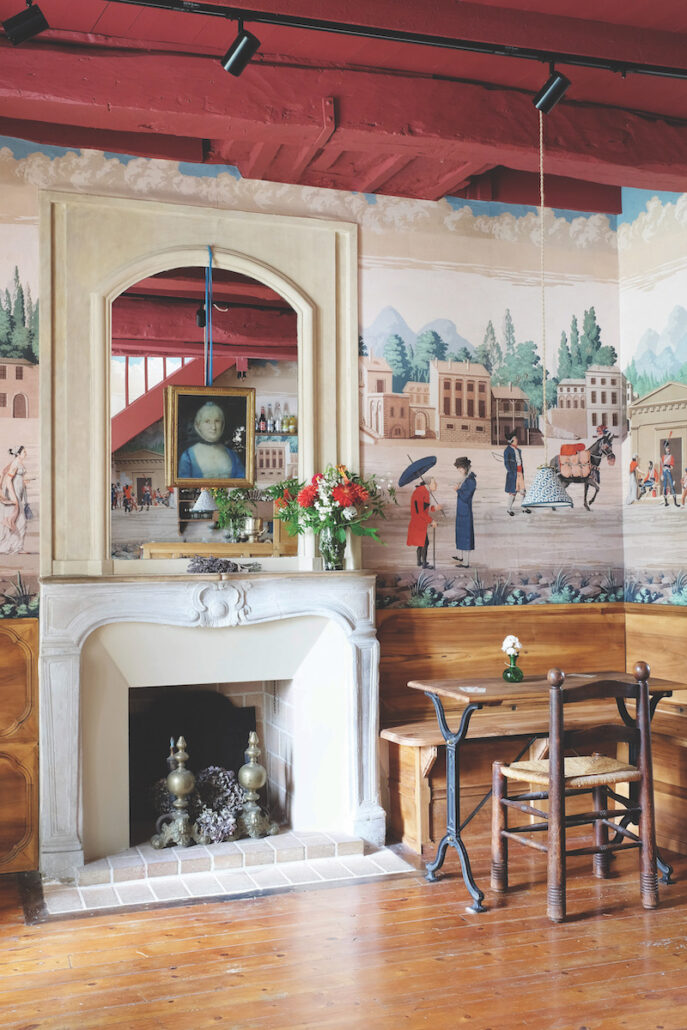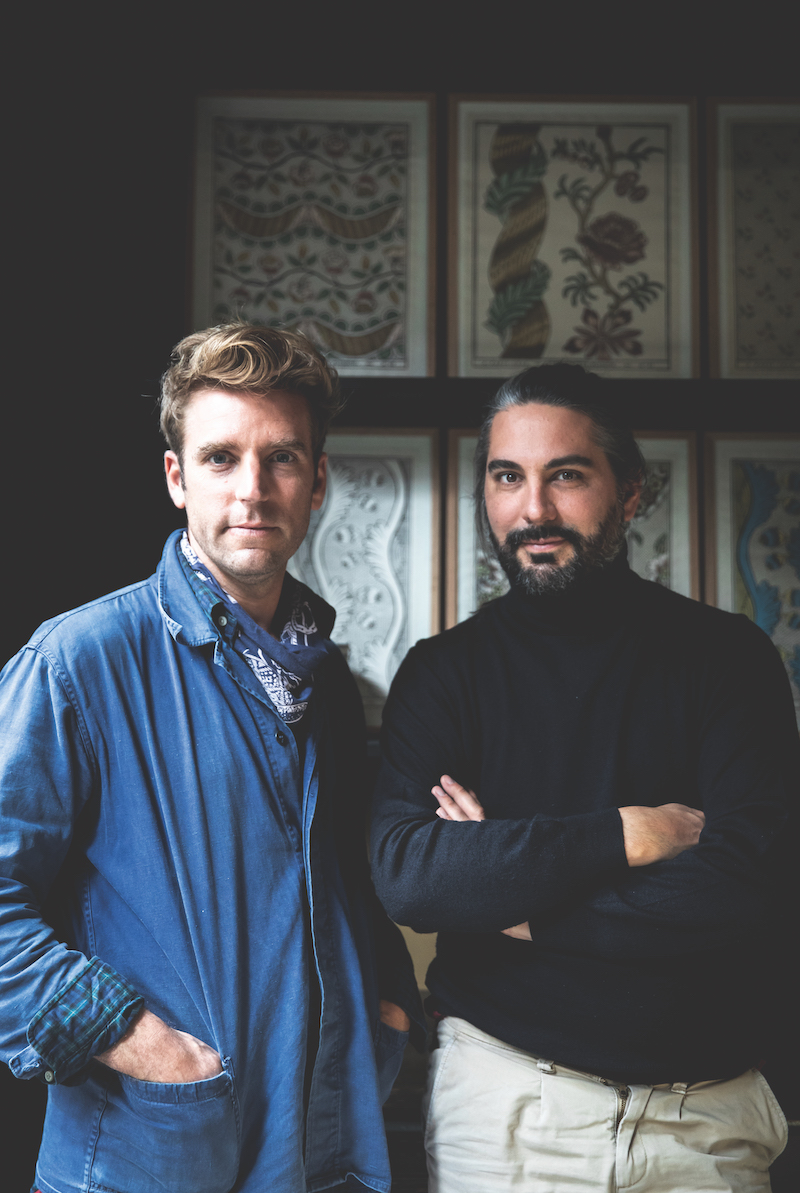Scenic wallpapers are having a moment right now. As wallpaper is the cornerstone of Antoinette Poisson, what are your thoughts on why this revival is currently happening?
Interior decoration follows fashions, and, like clothes, it follows an eternal cycle. We have been observing the return of wallpaper decorations in France for around 15 years. Panoramic wallpapers are fascinating because they tell stories and transport us to a different time, a different place.
In June 2023, Antoinette Poisson opened a new store in the seaside city of Port-Louis. It is called PORT-LIBERTÉ and shares the same name as your latest wallpaper creation. Can you tell us about the PORT-LIBERTÉ wallpaper?
Our new wallpaper, PORT-LIBERTÉ, is both our very first panoramic wallpaper and, historically, the first of its kind, created at the end of the 18th century after the French Revolution. Visually it represents events at the end of the 18th century in France: the return of immigrants who had fled before the French Revolution and who, upon their return, were confronted with the golden youth of the time. Only four examples of this scenic wallpaper still exist, and we acquired the original wallpaper – mounted on a screen – at an auction. One of the other examples is kept at the Musée Carnavalet in Paris and was restored by us in 2005.
How is a scenic wallpaper produced?
In the case of PORT-LIBERTÉ, it is a reproduction of original decor. There is extensive photography and digital retouching work to obtain a readable image that retains the patina of time.
Included in the Antoinette Poisson brand are printed linens, stationery and wallpaper, yet it is Dominoté papers that play the biggest role. What is it about their aesthetic that appeals to you?
Dominoté papers are very interesting because they were the first printed papers intended to cover walls (the ancestor of wallpaper), but they are also very graphic and modern. We really like printed papers, specifically those from the 18th century.
Much of your work draws on imagery found on centuries-old wallpaper, book coverings and decorative papers. Where do you source visual material to add to your historical archives?
Vincent Farelly and I find these archival pieces at auctions but also from booksellers or individuals.
Right before the pandemic lockdowns began in Paris, you purchased a townhouse in Port-Louis that retained original features from the 18th century. Can you tell us about the house and what it means to you?
The Lescop house (named after its first inhabitant, a merchant from the East India Company) seduced us with its charm and the numerous old elements still present. The entire house had been remarkably well preserved in its state, dating from 1750. This house by the sea became our field of decorative experiments.
Given the intricate details of your wallpaper designs, how would you suggest people display or incorporate other artworks into such vivid backgrounds?
The important thing is to know how to combine patterns and colors in your interior, to find a balance that is unique to you. Our prints work just as well in old interiors loaded with art objects as in more refined or more modest interiors.
Above: Jean-Baptiste Martin and Vincent Farelly. Photo: Ruth Ribeaucourt. Courtesy: Antoinette Poisson.

Tea room and restaurant at PORT-LIBERTÉ in Brittany. Courtesy: Antoinette Poisson.

Selection of textiles and wallpapers in the Paris showroom. Courtesy: Antoinette Poisson.

Handprinted indigo domino papers made in Paris. Courtesy: Antoinette Poisson.

